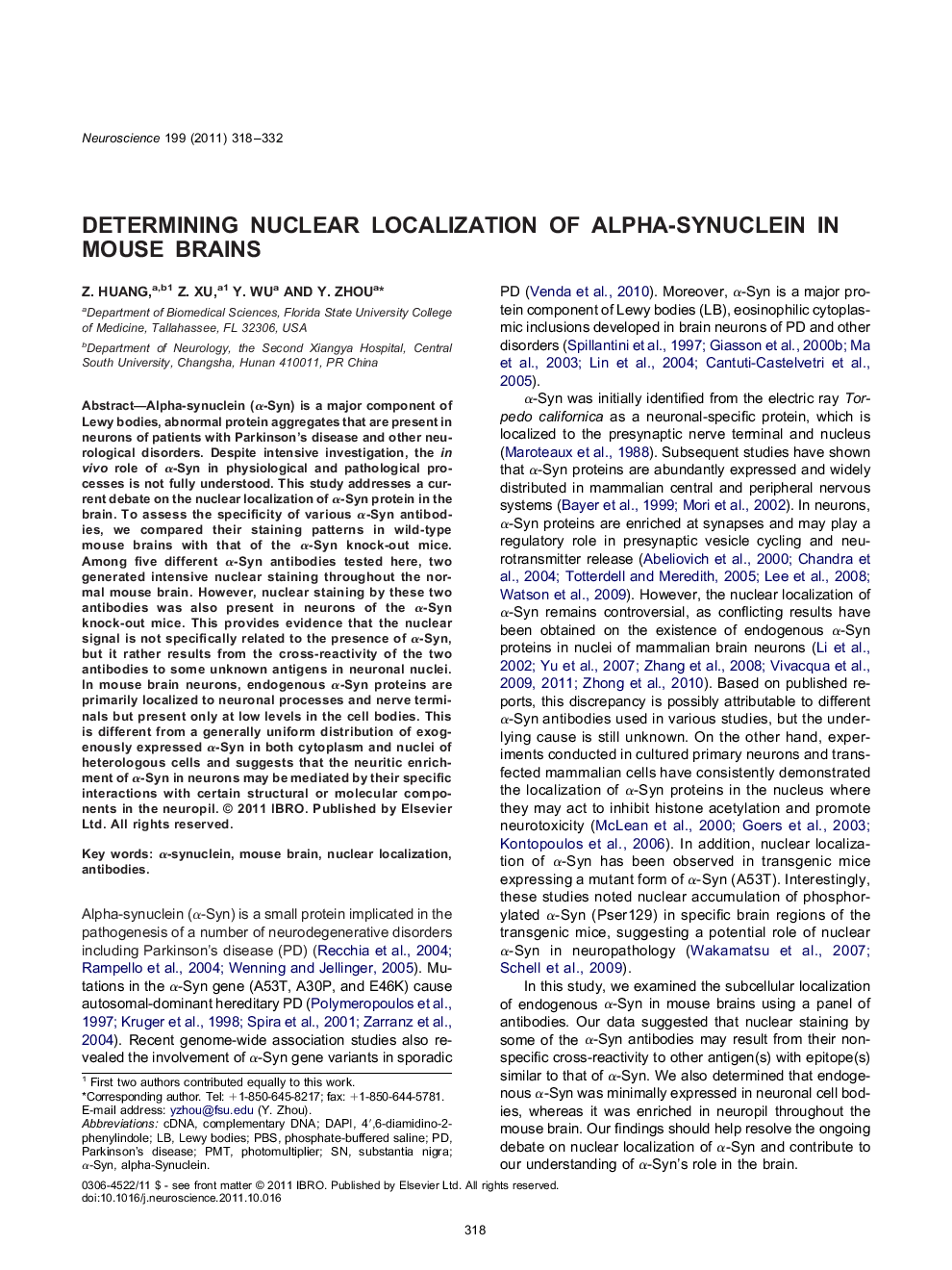| Article ID | Journal | Published Year | Pages | File Type |
|---|---|---|---|---|
| 4338680 | Neuroscience | 2011 | 15 Pages |
Alpha-synuclein (α-Syn) is a major component of Lewy bodies, abnormal protein aggregates that are present in neurons of patients with Parkinson's disease and other neurological disorders. Despite intensive investigation, the in vivo role of α-Syn in physiological and pathological processes is not fully understood. This study addresses a current debate on the nuclear localization of α-Syn protein in the brain. To assess the specificity of various α-Syn antibodies, we compared their staining patterns in wild-type mouse brains with that of the α-Syn knock-out mice. Among five different α-Syn antibodies tested here, two generated intensive nuclear staining throughout the normal mouse brain. However, nuclear staining by these two antibodies was also present in neurons of the α-Syn knock-out mice. This provides evidence that the nuclear signal is not specifically related to the presence of α-Syn, but it rather results from the cross-reactivity of the two antibodies to some unknown antigens in neuronal nuclei. In mouse brain neurons, endogenous α-Syn proteins are primarily localized to neuronal processes and nerve terminals but present only at low levels in the cell bodies. This is different from a generally uniform distribution of exogenously expressed α-Syn in both cytoplasm and nuclei of heterologous cells and suggests that the neuritic enrichment of α-Syn in neurons may be mediated by their specific interactions with certain structural or molecular components in the neuropil.
▶Nuclear localization of endogenous α-Syn in the brain is controversial. ▶Specificity of a panel of α-Syn antibodies was assessed by using the α-Syn knock-out mice. ▶Nuclear staining by some of α-Syn antibodies results from the nonspecific cross-reactivity. ▶Exogenously expressed α-Syn is distributed in both cytoplasmic and nuclear compartments.
